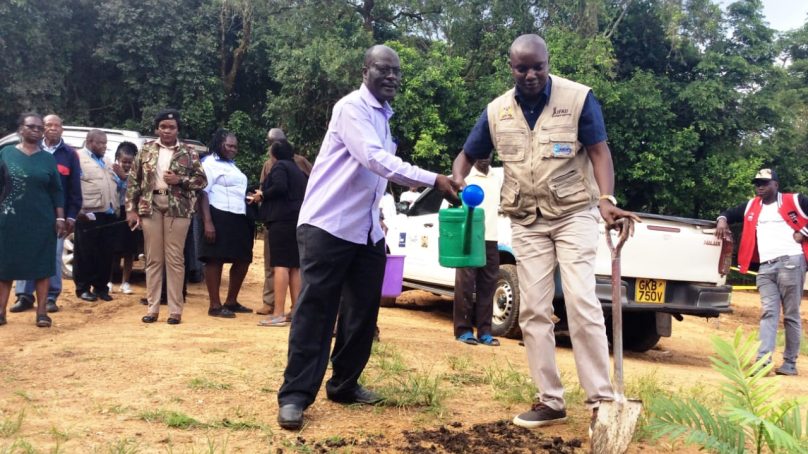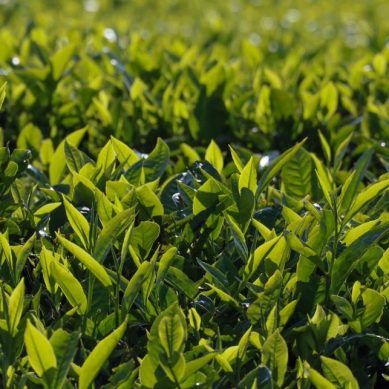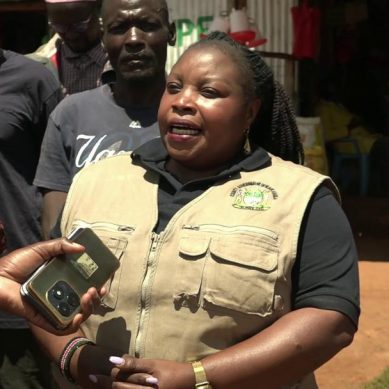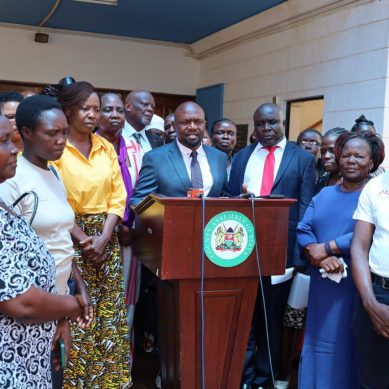
Blue economy is eliciting massive interest in Kenya’s hinterland, with 15 counties in the west classed as lacustrine competing for a slice of earnings previously enjoyed by fishermen in Lake Victoria, 10 other lakes in the Rift Valley and numerous rivers.
Kakamega county is emerging as a leader in aquaculture or pisciculture as first phase of the Aquaculture Business Development Programme (ABDP) enters homestretch. Currently, fish farmers in Kakamega and western Kenya in general are taking advantage of the rapidly rising demand vis-a-vis dwindling supply from the traditional source – Lake Victory – to offset the national deficit.
Kenya National Bureau of Statistics estimates the national deficit to be 436,000 metric tonnes, approximately four times the current production levels of 170,000 metric tonnes. At the onset of the blue economy programme, the deficit used to be offset by imports from China, but recently Nairobi signed a bilateral trade agreement with Mogadishu, which gives Somalia a leeway to export fish to Kenya duty-free.
In Kenya, Kakamega has responded to the challenge of bridging the fish deficit and currently leads the 15 counties in the lacustrine region with roughly 7,000 fish farmers who supply the raw material (fish) to the fish processing factory at Lutonyi, Kakamega town. The county has close to 10,000 fishponds and produces over 1,800 metric tonnes of fish valued at roughly Ksh540 million ($4.2 million) in a seven-month production cycle.
In comparison, Lake Victoria, the world’s second largest freshwater lake produces 98,000 metric tonnes valued at $85 million, having declined from 200,000 tonnes between 2002 and 2022.
Rising pollution in Lake Victoria waters, coupled with colonisation of the Kenya side of the lake by the water hyacinth and the longstanding dispute between Kenya and Uganda over maritime boundary, have adversely affected fish supply. The shortage makes fish farming lucrative and a more vital source of protein for more than 10 million residents in the lacustrine region.
Aquaculture Business Development Programme has identified aquaculture or pisciculture as a key component of Kenya’s Vision 2030 – Kenya’s economic Marshall Plan that aims to position the East African nation as a newly developed country. Under Vision 2030, blue economy is recognised as a leading contributor to national food security and places significance on fish farming as a business and nutritional programme.
ADBF is giving incentives to fish farmers in 15 lacustrine counties to grow the sector that hitherto was synonymous with lakes and rivers. So far, the programme has been given Ksh14 billion investment by national and county governments.
The construction a fish processing factory in Kakamega – which buys a kilogramme of fish at Ksh300 – has given local farmers the impetus they needed to invest in an enterprise that thrives on small parcels of land. Kakamega county, with a population of approximately two million people is a high-potential agricultural area in Kenya but competition for land resources for cash crops like sugarcane, coffee and tea has compromised food security, hence need for diversification into pisciculture. The situation is complicated further by rapid population rise that exerts added pressure on available land for agriculture.
Against this backdrop, ABDP steering committee recently toured Busia, Vihiga, Kisumu, Homabay, Siaya, Migori, Kisii and Kakamega counties to assess the acceptability and extent of fish farming in the region. During the trip, the committee disbursed Ksh300 million ($2.32 million) to Kakamega county farmers to spur further fish farming.
ABDP will come to a close in or around June 2026 when it estimates that fish-farming and production will be a key component of local economies that have for more than 60 years been dependent on sugarcane farming following the collapse of cotton, maize and dairy industries in the 1970s through 1980s. Beyond raising household incomes, the programme aims to bolster national food security in Kenya and on the African continent.
UN agency, the International Fund for Agriculture Development (IFAD) and the Kenya government are the key financiers of ABDP, which is spearheading the implementation of blue economy policies designed to empower rural farming communities in Kenya.
While in Kakamega, the team visited Butali-Chegulo Aquaculture Self-Help Group that is designated by ABDP a model farm. It is one of the 32 out of 43 groups that are benefiting from funding and expertise provided under the blue economy policy programme. In Chegulo-Butali, ABDP distributed predator and bird nets, PVC liners, fingerlings, fish feeds and extension services to members.
The project is anchored on ‘Fish for health and wealth’ theme and is regarded as the engine of value addition in farming activities besides poultry, vegetable, dairy, potato and tissue culture banana farming.
The other farm the ABDP team visited is Labedcash Marine Integrated Farm in South Kabras, whose owner Laban Mwanzo has 220 fishponds and produces black soldier flies, assorted vegetables and fruits in addition. The farm is also famed for supplying fish for food and fingerlings for new farmers – both at county and national levels.
Chairman of ABDP Project Steering Committee (PSC), who is also the Secretary of Fisheries and Blue Economy Rodrick Kundu, urged farmers in the county to invest more resources in aquaculture and fish ponds to compliment Laban Mwanzo’s, noting that the rebates are good during harvesting of fingerlings and mature fish for food.
“We have been going around the counties to assess the status of our fishponds and its production and one major concern has been the quality of fingerlings that result in poor production. But in Labedcash Marine Integrated Farm, quality is upheld and we are impressed with his input in fish farming and production. We want all the county farmers to visit and learn from his farm for better fish production.”
Mwanzo on his part said he invests a lot in manpower on his fish farm and hailed the ABDP project for their support.
“I have at least 220 fish ponds that can supply 10 million fingerlings at ago to farmers across the county and even beyond and we have been harvesting fish for supply to the county market and Kakamega fish factory, with surplus to consumers from every part of this country. We also offer industrial attachment to students from colleges pursuing aqua-farming. Plans are also underway here to begin producing our own fish feeds as managing over 220 fishponds from your own pocket is not that easy. We shall be able to sell the feeds to other fish farmers in the county and country,” said Mwanzo.
The farmer lauded the regional government and ABDP county office for providing expertise and market for fish as a necessary ingredient in the war against poverty, increase food security and nutrition among rural communities.
The aquaculture project will be expanded in the 15 counties through request by farmer organisations, regional governments, says the ABDP steering committee
- A Tell report / By Isaac Andanje Wakhungu







